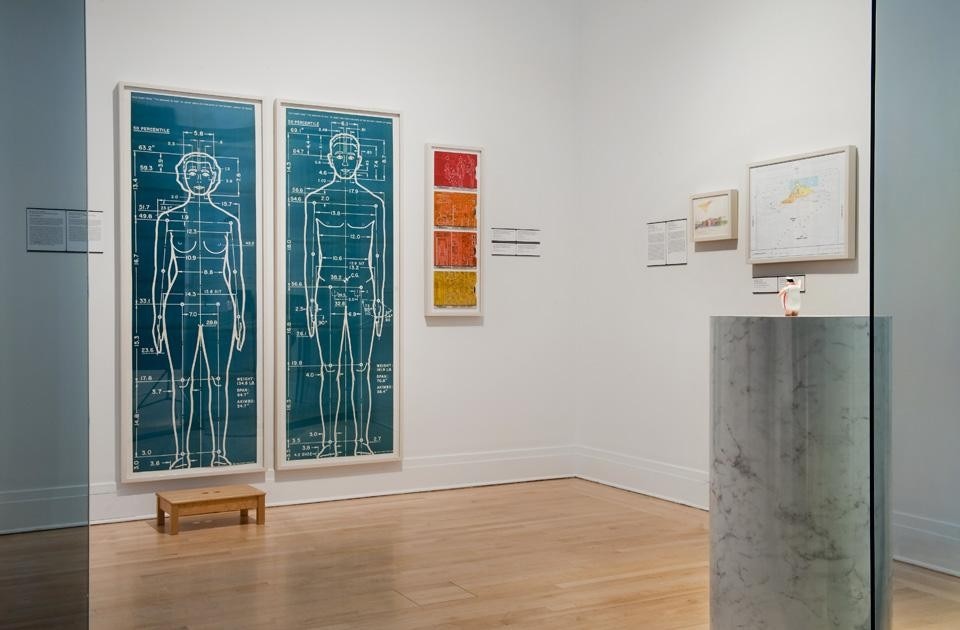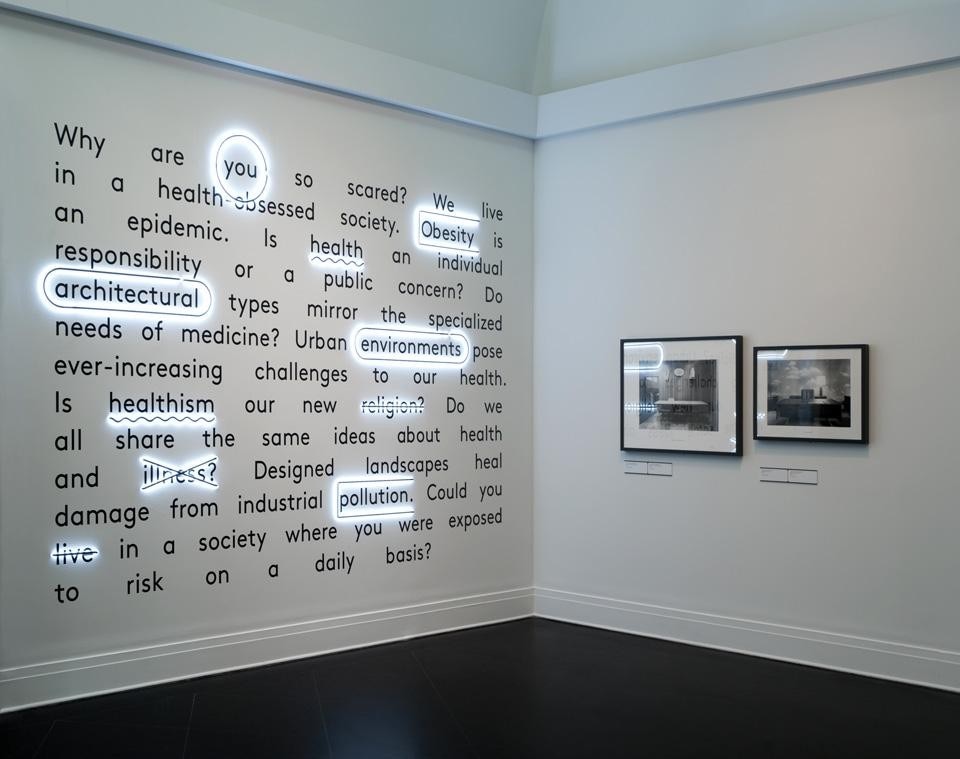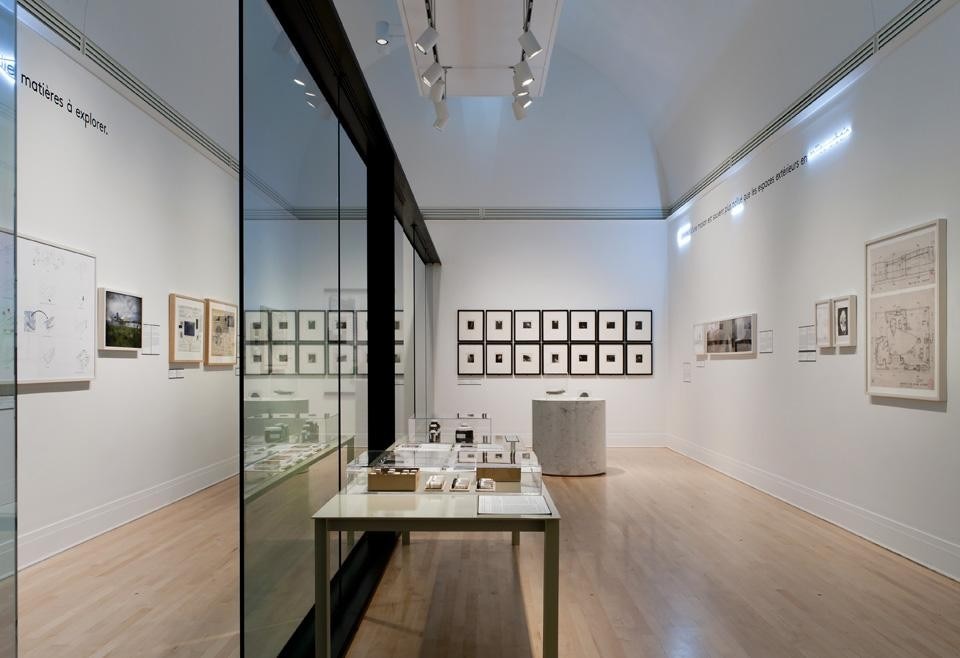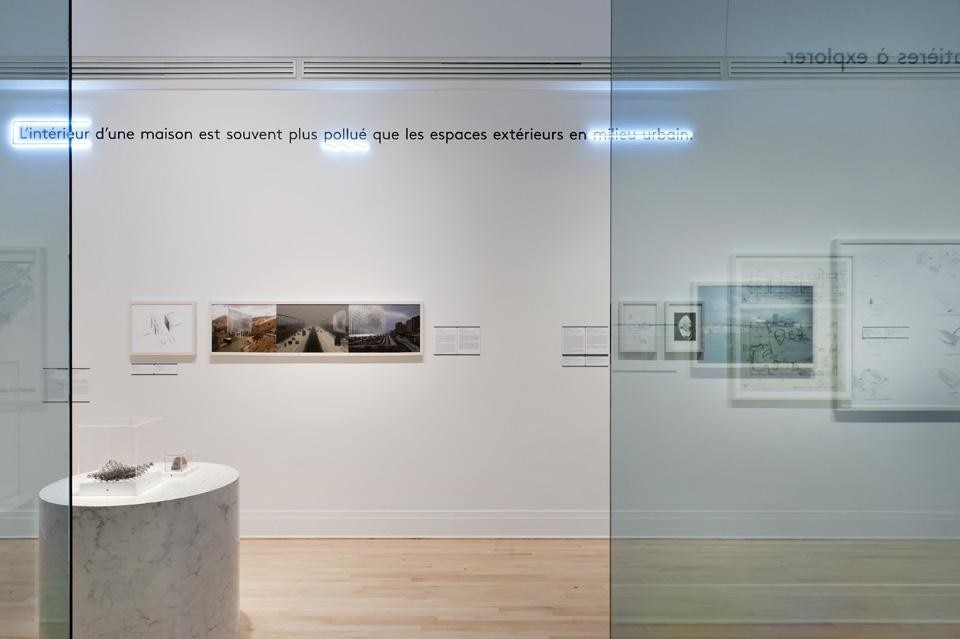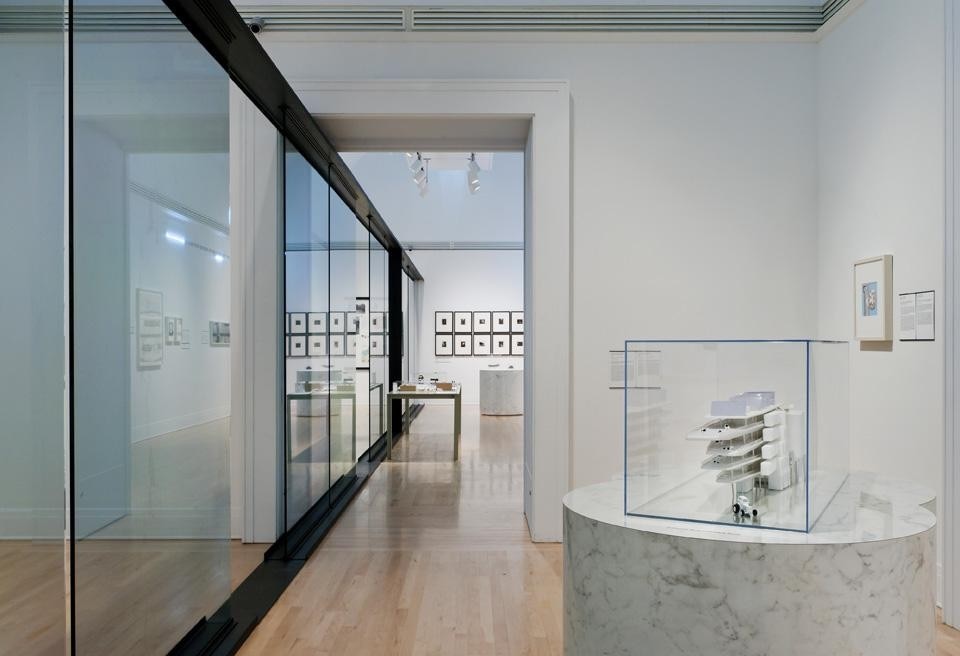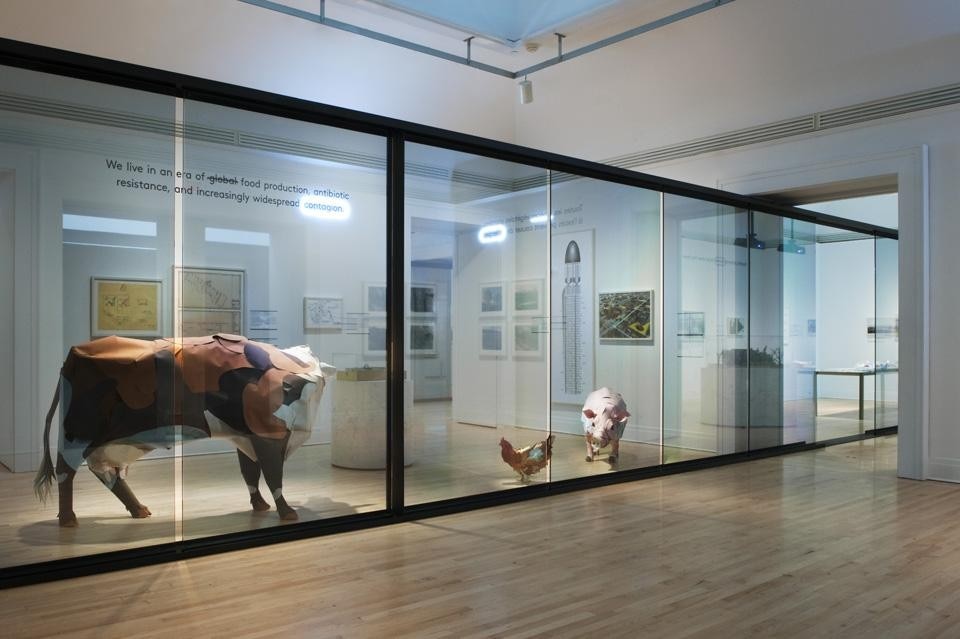Providing some 30 projects and ideas, the exhibition demonstrates the powerful possibilties of an architecture in partnership with its environment, in some cases acting as a management device, channeling air, dust, water, flora, and fauna, among others. With its title overtly confessing that this ambition is not naive to presuppose perfection, the show acknowledges the downfall of value-based intentions. The curators write that "these projects ultimately face the resistance of an imperfect world." Through this resistance, the show surveys a range of approaches and techniques for managing health in architectural environments - from quarantined spaces to perambulatory circulation to environment processing. Again, architecture not as a curative agent, but as a management device.
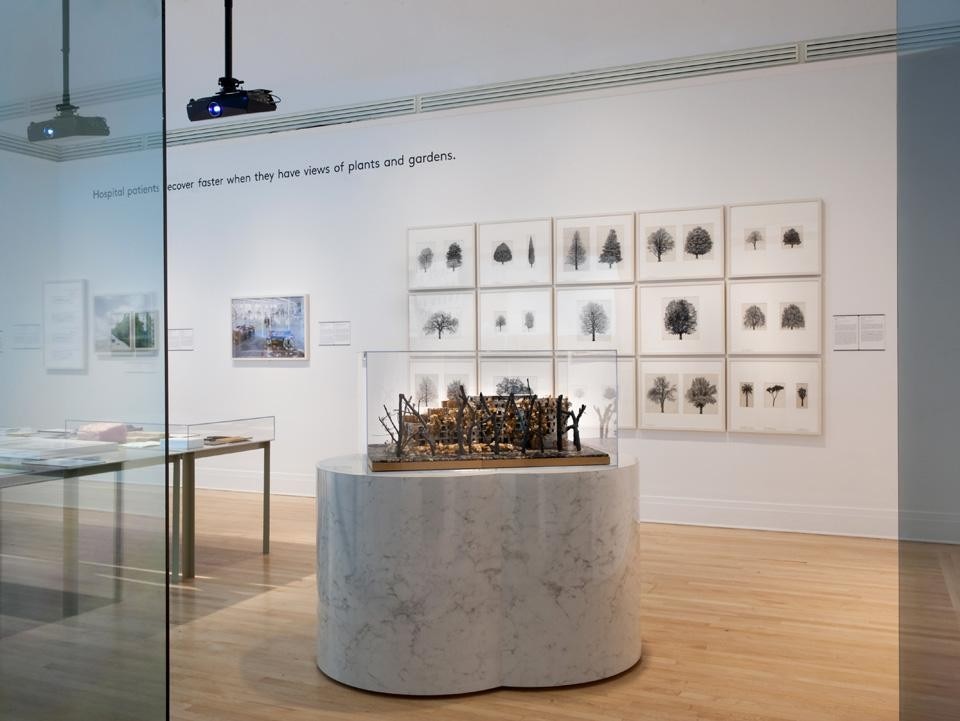
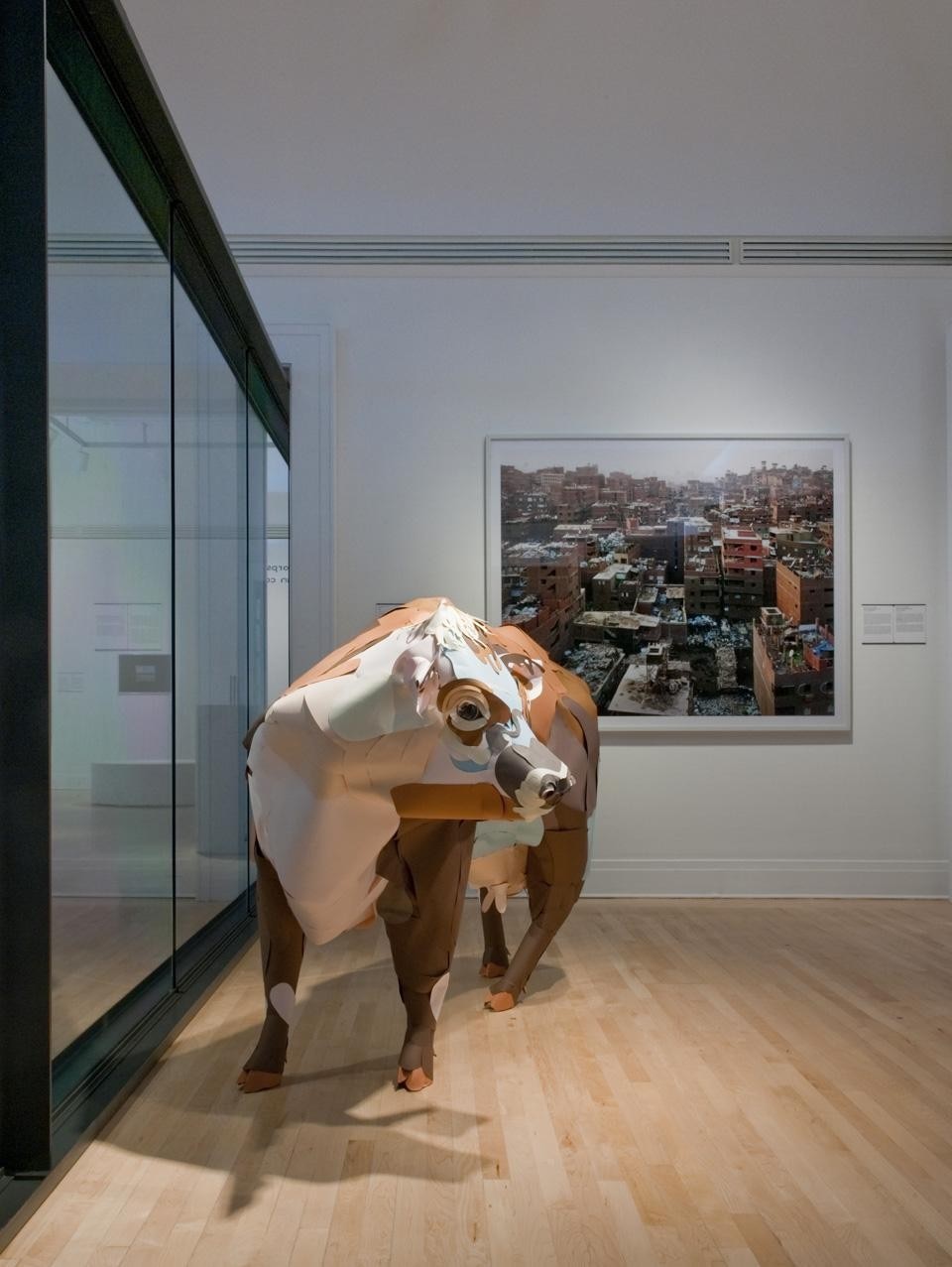
Much of the work in the show suggests that architecture "manage" its environment through nature. In fact, landscape is a powerful subtext to the show, as nature provides a healthy counterpoint to Architecture's toxic tendencies
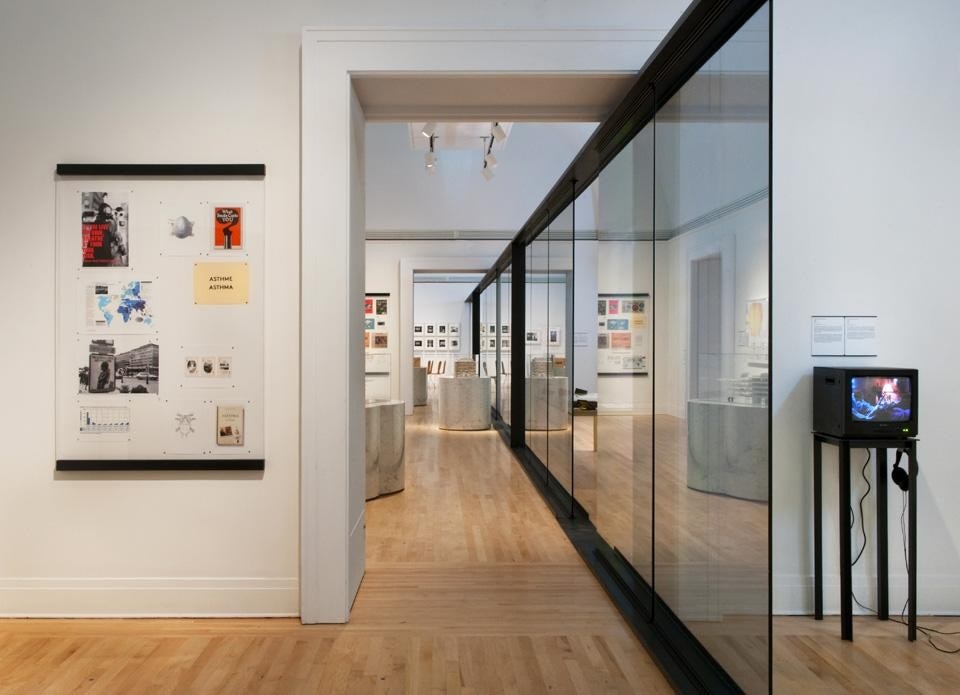
The exhibition, elegantly designed by Office Kersten Geers David Van Severen, employs a series of subdividing parallel glazed screens, which brings a powerful clinical sense to moving through the show. This device doubles exhibition rooms and creates conflicting medicalized readings of corridor and room. In addition, the exhibition features a list of highlighted key tag words, such as infection, nutrition, and sanitation that help to hyperlink content across the show.
Mason White (@masoncwhite) is Assistant Professor at University of Toronto and a partner in Lateral Office, Toronto.
Imperfect Health: The Medicalization of Architecture
Canadian Centre for Architecture
Curated by Giovanna Borasi and Mirko Zardini
Through 1 April, 2012
